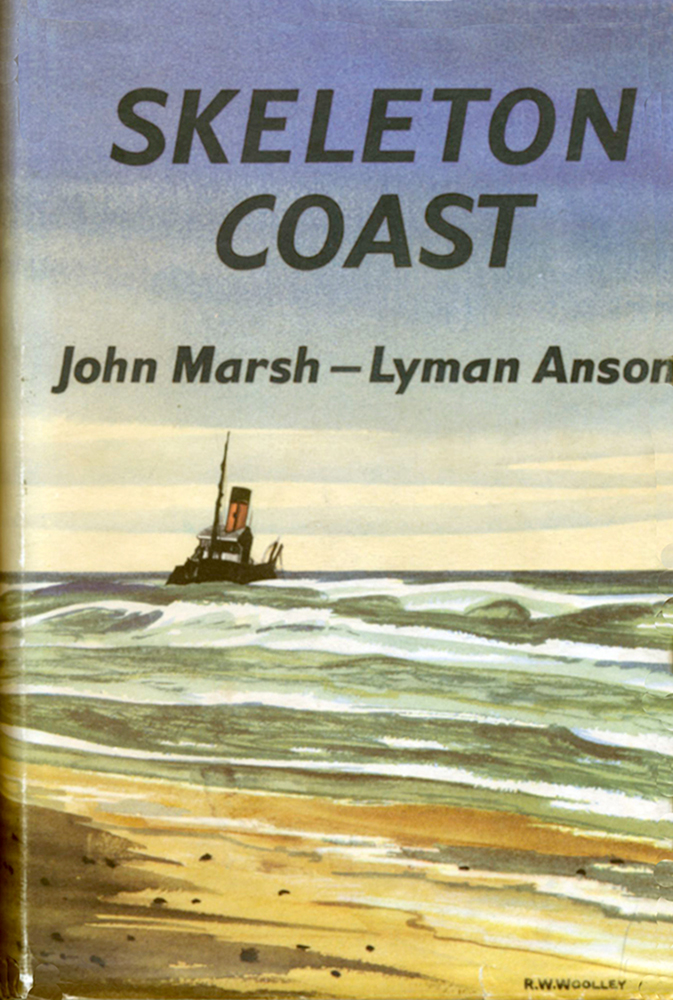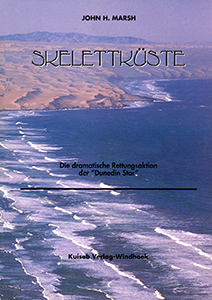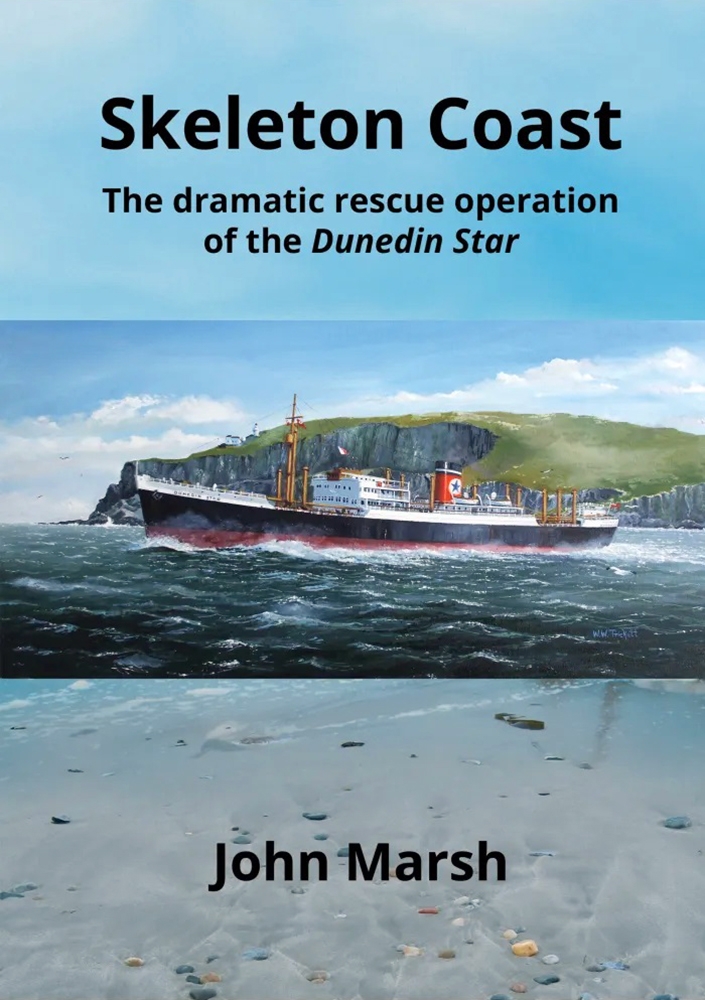Skeleton Coast (edition of 1958), by John H. Marsh and Lyman Anson
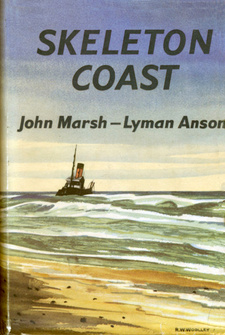
Skeleton Coast (edition of 1958), by John H. Marsh and Lyman Anson. Hodder & Stoughton. London, Great Britain 1958
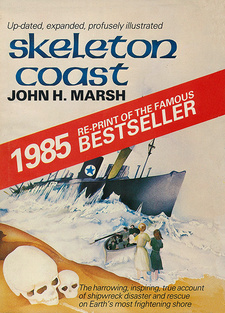
Skeleton Coast (Reprint 1985), by John H. Marsh. Marshes Books. Johannesburg, South Africa 1985

Skeleton Coast (Reprint 1985), by John H. Marsh. Marshes Books. Johannesburg, South Africa 1985, without original dustjacket.
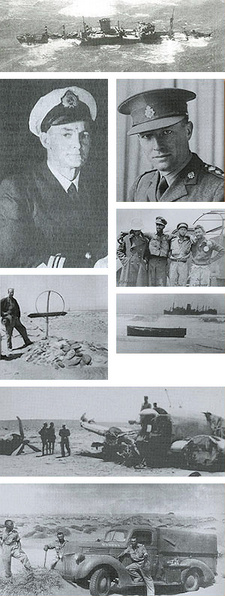
Excerpt of images from: Skeleton Coast. The dramatic rescue operation of the Dunedin Star (Reprint 1985), by John H. Marsh. Marshes Books. Johannesburg, South Africa 1985.
Lyman Anson gave very special thanks to John H. Marsh for making available the photographs used in Skeleton Coast (edition of 1958), and for sharing with him the historical facts in his own 1944 account of the wrecked Dunedin Star. The following excerpt is taken from chapter III.
FIVE minutes after reaching the engine room in pajamas and slippers following the crash, Chief Engineer Tomlinson had been sure the Dunedin Star was doomed. He had reported only the facts as he found them. It was the Captain's province to draw conclusions. Tomlinson was down in the engine room on one of his many subsequent inspections when he felt the vessel heel over to port as the Quartermaster swung her in a huge semicircle. He hurried up to the bridge and found with relief that they were heading for land at last. He explained the growing damage below. Captain Lee listened silently, then asked, "How long do you figure she'll float, Jim?" "Another three hours, sir. Four at most." They stood a moment listening to the sound of foaming water rushing past far below. Traveling with the waves now, instead of against them, gave the illusion that the ship had lost her speed. That this was only an illusion was proved by the height of the phosphorescent bow wave V-ing out on either side. Its soft glow against the black water moved one war-seasoned lookout, a commercial artist in civil life, to confide to his ex-pugilist comrade, "Pretty sight, Joe, the symmetry and all." "Might be," the other conceded, with commendable frankness, "if I wasn't so damned scared of gettin' me feet wet." Captain Lee's decision, a tough one, was not made easier by the fact that this was his first voyage in command of the Dunedin Star, as well as his first along this particular coast. He was a comparatively young man to be in charge of so large and fine a vessel. But he had held a master's certificate for fifteen years, and his service record with the company was excellent. They had given him his first command three years before. He had had no accident—until now. Now he was in a jam. He faced no ordinary predicament. His problem was complicated by the war. He must consider more than the precious cargo the Dunedin Star carried; more even than her passengers and crew. He must think of the value of his ship to England's war effort. There might be a chance to save at least something out of the catastrophe if only he could run her ashore before she sank. It was a gamble, but worth the chance. Since Hold 3 seemed to be making water fastest, he ordered every hold pump switched onto 3. The Chief Engineer thought his engine room might be kept dry by its own battery of pumps. He was wrong. They couldn't begin to control the rush of water into that most vital part of the ship. So Captain Lee directed that all five powerful electric pumps be worked at full capacity on the engine room alone. Even then, water slowly crept up—up—up until it appeared above the floor plates. The shaft tunnel was flooded already. Steel doors separating shaft tunnel from engine room bulged under the weight of water pressing against them. When Captain Lee saw for himself how water spurted into the engine room through every "water-tight" joint, he knew the time had come to summon help, even if it attracted prowling U-boats as well. He went to the wireless room and told the chief operator to send out an SOS at once. "At once, Mr. Kilpatrick." Passing his own cabin on the way to the bridge, he remembered the copy of Macbeth lying on the floor where it had landed when the crash came. [...]
This is an excerpt from Skeleton Coast (edition of 1958), by John H. Marsh and Lyman Anson.
Title: Skeleton Coast
Author: John H. Marsh; Lyman Anson
Edition: Quality Book Club Edition
Genre: Naval History
Publisher: Hodder & Stoughton
London, Great Britain 1958
Original cloth binding and dustcover, 14 x 21 cm, 268 pages, 10 b/w photographs
Marsh, John H. und Anson, Lyman im Namibiana-Buchangebot
Skeleton Coast (edition of 1958)
The 1958 edition of the book Skeleton Coast was written by Lyman Anson, and was based on John H. Marsh's first edition of 1944.
Skelettküste. Die dramatische Rettungsaktion der Dunedin Star
Dies ist die deutsche Übersetzung der berühmten Rettungsaktion für die an der Skelettküste gestrandeten Dunedin Star.
Skeleton Coast. The dramatic rescue operation of the Dunedin Star
The ship Dunedin Star ran aground at the Skeleton Coast, followed by a dramatic rescue operation in 1942/1943.

